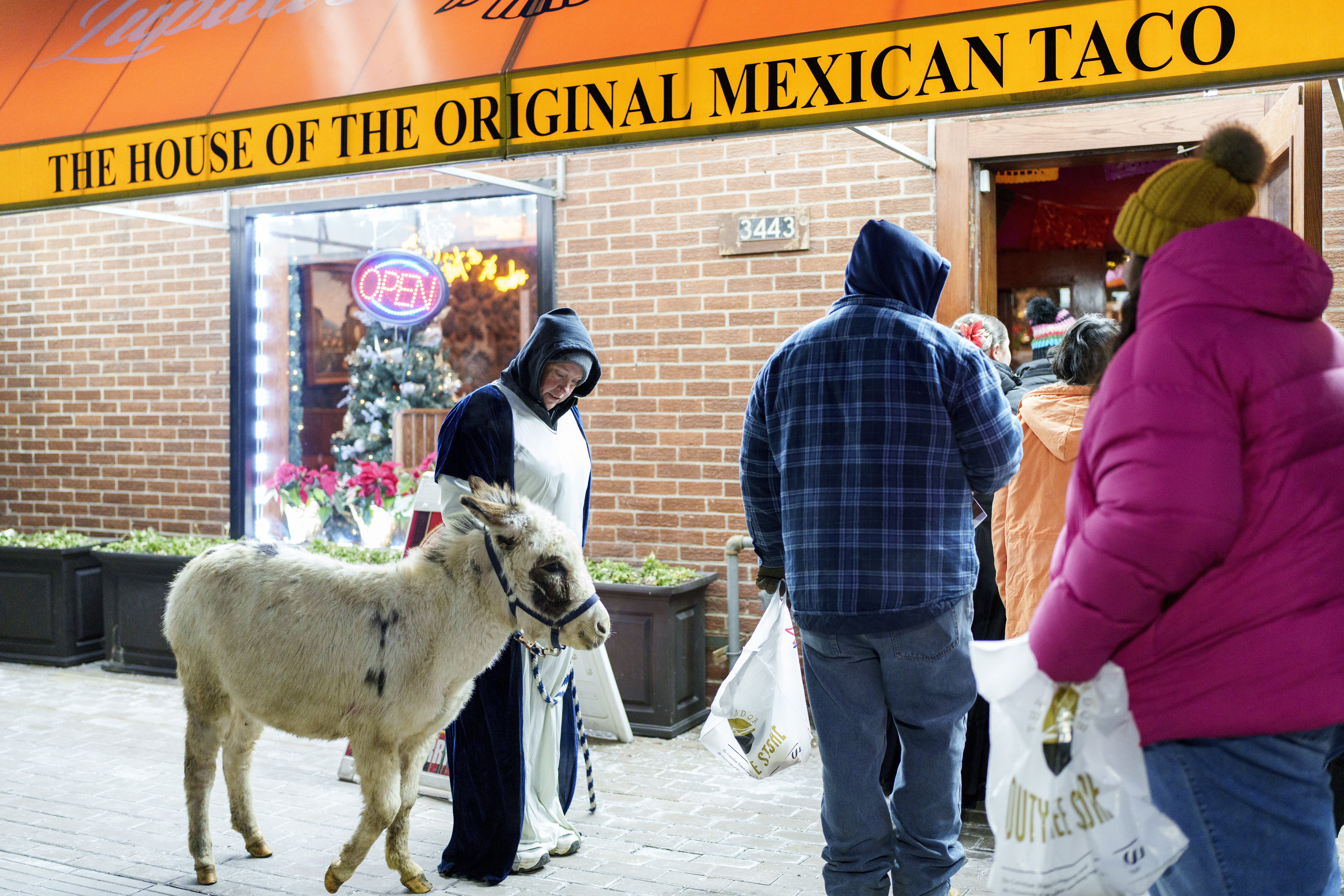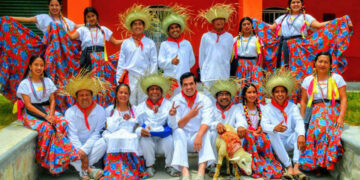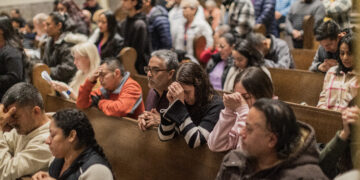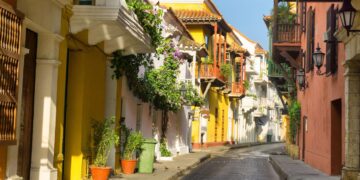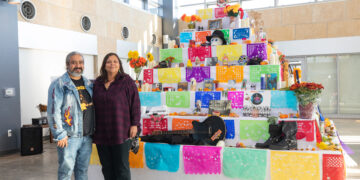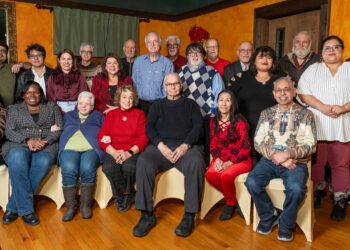The first time I went to the United States at the end of October, it was in 2013 or 2014, close to the date of the Day of the Dead; I was happy to be able to take them and share the Mexican holiday, I brought them Pan de muerto, sugar skulls with their names and Mexican chocolate to prepare with milk. I arrived at my friends’ house and gave each of them a sugar skull with their name, I gave them Pan de muerto and prepared hot mexican chocolate.
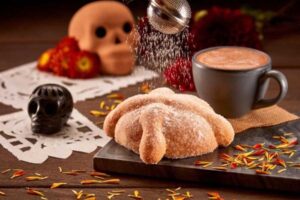
They were pleased by the chocolate mexican drink, however, their faces showed strangeness: Pan de muerto and sugar skulls with their name. I remember that someone asked me if Pan de muerto had some kind of ashes of a dead person, I answered: No. It was just the name given to the type of bread that is prepared for this holiday. But they were not the only ones confused, because I did not understand their faces when they looked at the sugar skulls with their names on them. They knew it was a gift, but they did not understand if it implied that I wanted them dead, so, one of them asked. No, I did not want them dead, I just wanted to show them my love through these sugar skulls, a common gift that implies that I would think of them whether in life or in death.
It was then that I realized that yes, Mexicans did not have this type of taboo or shame regarding our death or that of those close to us. Yes, we were saddened by their absence, but we were happier that on these dates the deceased returned to visit.
So, one of my friends took me to Café con leche. They were setting up an altar-offering for the dead! I felt like I had come home, now I could share with someone the joy that was the Day of the Dead, there was no taboo, only joy in making papel picado, arranging the decorations and leaving the altar ready so that on the night of November 2, the dead could respond to the call and enjoy what they liked most.
Recipe Pan de Muerto
Pan de muerto is one of the most expected seasonal desserts in Mexico, with its orange and orange flavor, its spongy texture is ideal to eat with hot chocolate.
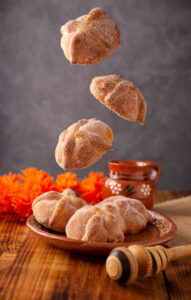
Ingredients:
- 3 1/2 cups of flour
- 8 ounces of butter (one stick)
- 3 eggs
- 1 1/4 cups of sugar
- 1/2 cup of water
- 2 tablespoons of grated orange peel
- 1 tablespoon of yeast
- 7 egg yolks.
- 1/4 teaspoon of salt.
- 1 tablespoon of orange blossom water (if you can’t find it, you can substitute it with 2 tablespoons of anise tea prepared and well strong)
Preparation:
- In a container, put the yeast together with half a cup of sugar and the water that should be warm (be careful not to let it be hot) so that the yeast activates. After a while, bubbles will begin to come out of the mixture and that means that the yeast is already “awake” but if that doesn’t happen, you have to repeat the process.
- On a kneading surface or in a mixer, place the flour, 1/4 cup of sugar, the orange zest, salt and the orange blossom water or anise tea and gradually mix the ingredients together; add the two whole eggs, as well as the yolks and the yeast. Knead until the mixture is smooth and manageable. Once you have the dough, let it rest covered with a damp cloth or plastic wrap in a warm part of the kitchen until it doubles.
- Now you have to separate a part of the dough for the decorations or bones and with the rest form the buns of the size you want your breads to be and place them on a tray where they will double in size.
- With the dough set aside, make the bones, which are like strips that cross the bun and at the top is a little ball that is the skull of the bread. Beat the egg that was not used and use it as glue to place the bones on the bread as well as the little ball in the center. Let the loaves rest for about an hour in a warm area of the kitchen to double in size. Preheat the oven to 380°F, put the loaves in for 15 minutes and lower the temperature to 350°F to bake for 20 more minutes or until the bread is ready. Let it cool.
- Separately, mix a quarter cup of water and another of sugar and heat until the sugar is dissolved. With the resulting syrup, glaze the loaves and sprinkle the remaining sugar.
If you want to give your bread an interesting twist, you can replace the orange zest with lemon, grapefruit or tangerine. In addition, you can give it another flavor if you add it, which will give it a unique color.
Día de Muertos 2024
La primera vez que fui a Estados Unidos a finales de octubre, fue en 2013 ó 2014, cerca de la fecha de día de muertos; estaba feliz de poderles llevar y compartir la festividad mexicana, les llevé Pan de muerto, calaveritas de azúcar con sus nombres y chocolate mexicano para preparar con leche. Llegué a casa de mis amigos y les entregué a cada quién una calaverita de azúcar con su nombre, les di Pan de muerto y preparé Chocolate caliente.

Estaban agradados por el chocolate, sin embargo, su rostro mostraba extrañeza: Pan de muerto y calaveritas de azúcar con su nombre. Recuerdo que alguno me preguntó si el Pan de muerto tenía algún tipo de cenizas de muerto, le contesté que no, sólo era el nombre que se le da al tipo de pan que se prepara para esta fiesta. Mas no eran ellos los únicos confundidos, pues yo tampoco entendía su cara cuando miraban las calaveritas de azúcar con su nombre, sabían que era un regalo, pero no entendían si implicaba que yo los quería muertos, una de ellos de lo preguntó.
No, yo no los quería muertos, sólo quería mostrarles mi cariño a través de estas calaveritas de azúcar, un regalo común que implica que pensaría en ellos ya fuere en vida o en muerte. Fue entonces que me di cuenta que sí, los mexicanos no teníamos este tipo de tabú o pudor con respecto a nuestra muerte ni a la de nuestros cercanos, sí, nos daba tristeza la ausencia, pero nos daba más alegría que en estas fechas volvieran los difuntos para visitar.
Así, uno de mis amigos me llevó a Café con leche. ¡Estaban montando un altar-ofrenda de muertos! Me sentí de regreso a casa, ahora podía compartir con alguien el gozo que era el día de muertos, no había tabú, sólo gusto por hacer papel picado, acomodar los adornos y dejar listo el altar para que la noche del 2 de noviembre pudieran responder al llamado los muertos y disfrutar de lo que más les gustaba.

Con cariño para Robert Zwolak por todo su apoyo y contribución para EL CENTRAL: Hispanic News, por su amistad.
¡Qué en paz descanses Robert y que sigas disfrutando de andar en bicicleta allí donde estés!
¡Gracias por todo, Robert!
Receta Pan de Muerto
El Pan de muerto es uno de los postres de temporada más esperados en México, con su sabor a azahar y naranja, su textura esponjosita es ideal para comerse con el chocolate caliente.

Ingredientes:
- 3 1/2 tazas de harina
- 8 onzas de mantequilla (una barrita)
- 3 huevos
- 1 1/4 tazas de azúcar
- 1/2 taza de agua
- 2 cucharadas de ralladura de cáscara de naranja
- 1 cucharada de levadura
- 7 yemas de huevo.
- 1/4 de cucharadita de sal.
- 1 cucharada de agua de azahar (si no encuentran pueden sustituirlo por 2 cucharadas té de anís preparado y bien cargado)
Preparación:
- En un recipiente poner la levadura junto con media taza de azúcar y el agua que debe estar tibia (cuidado que no esté caliente) para que la levadura se active. Al poco tiempo comenzarán a salir burbujas de la mezcla y eso quiere decir que la levadura ya está “despierta” pero si eso no ocurre hay que repetir el proceso.
- En una superficie para amasar o en una batidora poner la harina, 1/4 de taza de azúcar, la ralladura de naranja, la sal y el agua de azahar o té de anís e integrar los ingredientes poco a poco; agregar los dos huevos enteros, así como las yemas y la levadura. Amasar hasta que la mezcla este suave y sea manejable. Una vez que lograron la masa deben dejarla descansar tapada con un paño húmedo, o con papel film, en una parte tibia de la cocina hasta que doble.
- Ahora hay que separar una parte de la masa para las decoraciones o huesitos y con el resto formar los bollos del tamaño que quieran que sean sus panes y colocarlos en una charola en la que éstos van a duplicar su tamaño.
- Con la masa apartada hay que hacer los huesitos que son como tiritas que cruzan el bollo y hasta arriba está una bolita que es el cráneo del pan. Batir el huevo que no se utilizó y a forma de pegamento usarlo para colocar los huesos al pan así como la bolita del centro.
- Dejar reposar los panes, aproximadamente durante una hora, en una zona tibia de la cocina para que dupliquen su tamaño. Precalentar el horno a 380°F, meter los panes durante 15 minutos y bajar la temperatura a 350°F para hornear por 20 minutos más o hasta que el pan esté listo. Dejar enfriar.
- Aparte mezclar un cuarto de taza de agua y otro de azúcar y llevar al fuego hasta que el azúcar esté disuelta. Con el jarabe obtenido barnizar los panes y espolvorear el azúcar restante.
Si quieren darle un giro interesante a su pan, pueden sustituir la ralladura de naranja por alguna de limón, toronja o mandarina. Además, pueden darle otro sabor si le agregan le otorgará un color único.

